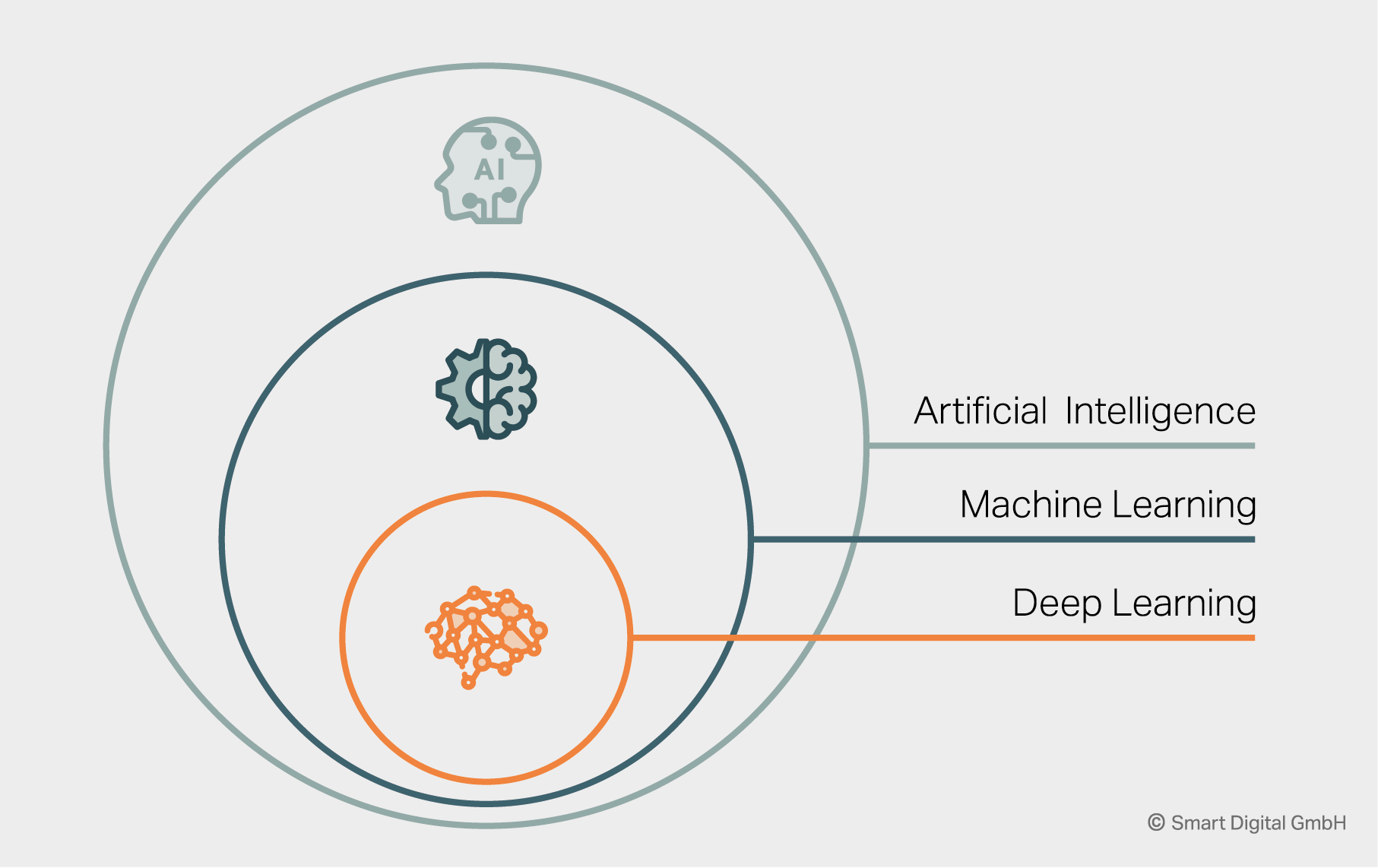The terms artificial intelligence (AI), machine learning and deep learning are everywhere these days, from digital services to household products. A Google search for “artificial intelligence” returns more than 750 million results! Many start-ups and companies around the world publicize themselves with terms like “AI”, “machine learning” and “deep learning” – often using them interchangeably, which leads to misinformation and misconceptions.
As an organization with deep expertise in Data Science, we feel it’s about time to clarify these terms.
Let´s start this explanation with a chart that helps to understand how the terms fit together:
Artificial Intelligence
AI is an umbrella term for machines making decisions or actions that would be perceived as intelligent in humans. It is the application by a machine of an algorithm. An algorithm is a set of rules that must be performed in certain way. For example, setting your home thermostat to always turn on the heat when the temperature is below 20 degrees Celsius would be one algorithm. Programming a car for automated driving uses many sets of algorithms.
One recurrent confusion nowadays exists between automation and artificial intelligence as AI is increasingly used a “power term” for literally everything in the marketing technology environment. Automation is in fact artificial intelligence, as it is the deployment of an algorithm, complex or not. The main perception that AI is “modern” predictive Data Science is an interpretation put unto the word.
Machine Learning
Machine Learning is the scientific field focused on the capability of machines to learn patterns from data without being explicitly programmed, the more data the better. Statistical learning methods or neural network driven algorithms for facial or handwriting recognition are all examples of machine learning.
We program machines to recognize patterns and optimize for objectives, such as identifying high-engagement users or predicting how many sales will occur on a shopping site next week. All machine learning is AI, but not all AI is machine learning. For example, programming your thermostat to always turn on the heat at 20 degree Celsius is not machine learning; it is however an algorithm defined by one rule. Machine Learning requires mathematics, statistics and computer science to be realized. It goes beyond the simple automation of “hard rules”.
Deep Learning
Deep Learning describes a specific type of algorithm. The “deep” part refers to the number of layers of a neural network. A neural network is a type of algorithm that was developed to model how neuronal cells feed information forward to each other, for example how neurons in the visual cortex propagate information towards higher processing centers. With the advent of modern computational technology, the original model has exploded into incredibly complex and sophisticated versions that can recognize faces, power Siri, and identify which stars are in the sky from your phone app. Deep Learning refers to the more sophisticated neural networks that exist and is especially powerful at non-linear differentiation. All Deep Learning is Machine Learning, but not all Machine Learning is Deep Learning.
At Smart Digital, we use Deep Learning for instance to identify high-affinity users and to power dynamic advertising on an individual user level.
Final take-home
Most marketing applications nowadays are promoted under the terms AI, ML and Deep Learning. The reality is that close to 100% of those applications use algorithms in one or the way in order to automate simple marketing processes, e.g. personalizing a newsletter. That is already an achievement. The real value of AI, ML and Deep Learning comes from leveraging data into insights, predictions and decisions. To get a better orientation what marketing tools are capable of, you should talk to providers rather about Machine Learning and Deep Learning then about AI.
Foto: Robynne Hu | Unsplash



